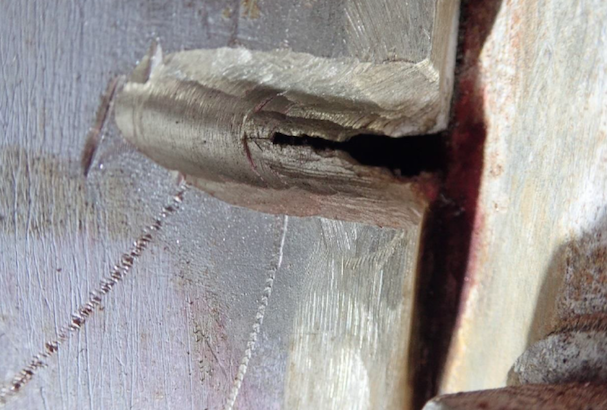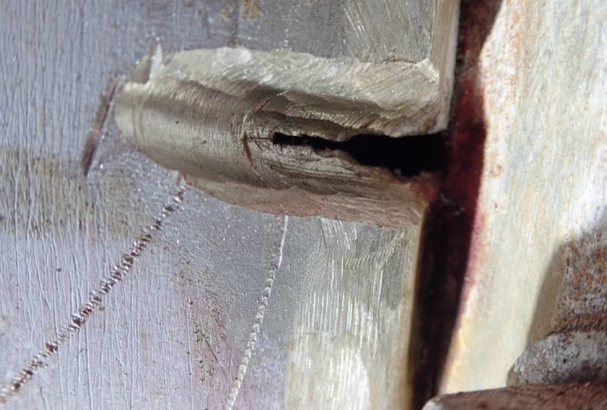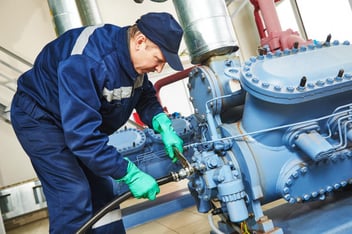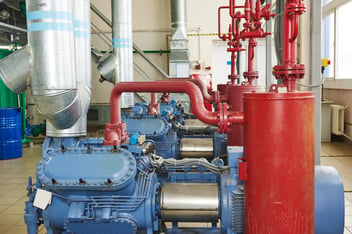Stress corrosion cracking (SCC) is a hazard for any pressure vessel operating in anhydrous ammonia service, and usually occurs near the beginning of a vessel’s life. If you own, operate, or design pressure vessels, you’ll want to make sure you understand what SCC is, why it’s dangerous, and what you can do to prevent it. Above all, it’s important to involve qualified professionals such as your technical supplier, contractor, and professional refrigeration engineer when making decisions around the management of SCC.
What is SCC?
SCC can happen when the management of oxygen, water, and ammonia in a pressure vessel is overlooked. Under the right conditions, microscopic cracks form in the vessel, creating pathways for ammonia release. These cracks form after the vessel is placed in service, so they’re not detectable during manufacturing. In most cases, the cracks will stop propagating, but due to the dangers presented by an ammonia leak, it’s important to understand the two conditions that can cause SCC.
The first condition is stress. Whether it’s caused by attached piping or frequent temperature changes (thermal cycling), all pressure vessels experience stress. Stress may also exist as a residual from the manufacturing process. In the case of welding, for instance, stress occurs when the metal experiences large variations in temperature following the welding process. After the weld metal cools and contracts, an area of high stress forms and remains inside the metal.
The second condition is chemistry. In an ammonia system, factors such as the oxygen and water content within a vessel can lead to SCC. Because it can be difficult to manage these factors, it’s important to make sure you are using other means to prevent SCC in your vessel.
What can you do to reduce the risk of SCC in new pressure vessels?
There are a number of ways you can reduce the risk of SCC in new ammonia pressure vessels. One method is stress relief—also called post weld heat treatment. The International Institute of Ammonia Refrigeration (IIAR) Standard 2 (2014) recommends stress relieving all pressure vessels prior to entering anhydrous ammonia service. Here’s how stress relieving works: after welding is completed, the pressure vessel is heated to a temperature high enough that any residual stress built up during the welding process is relieved. The vessel is then slowly cooled down. Industry professionals also recommend using hot formed heads or stress relieving cold formed heads during manufacturing.
There are ways to reduce the likelihood of SCC with in-service vessels too, including managing rapid temperature and pressure changes. You can also reach out to your professional engineer and your licensed refrigeration contractor, as they can both help you understand what appropriate action you can take to manage SCC risk in your new vessel.

Is your in-service pressure vessel at risk for SCC?
Every facility is different, and the operation of pressure vessels in ammonia service without stress relief or any of the other mentioned methods is not necessarily unsafe. Pressure vessels are at greatest risk of SCC early in their operational life and if a SCC failure does occur, they often appear as a “pinhole leak” at the outer surface of the vessel.
If you’re an owner of an ammonia refrigeration facility, speak with the refrigeration professionals you work with—including refrigeration contractors, professional refrigeration engineers, and even technical suppliers. They will help make sure you’re aware of any SCC risks at your facility. These refrigeration experts can assess whether the metallurgical and operating conditions are present for SCC and provide appropriate mitigation methods.
If you’re a refrigeration professional or expert, it is your professional responsibility to notify the owner of a new ammonia refrigeration facility about any SCC risks, so they can make informed safety decisions.
Registering your refrigeration system design
To improve the safety of ammonia pressure vessels, Technical Safety BC requires refrigeration system designs to be assessed by a professional engineer and registered according to the Safety Standards Act.
For more information on the causes and prevention of SCC in an ammonia refrigeration environment, here are some articles from reputable industry experts:
- Stress Corrosion Cracking: Defining and Diagnosing, Industrial Refrigeration Consortium
- Stress Corrosion Cracking: Prevention, Industrial Refrigeration Consortium
- Stress Corrosion Cracking of Steel in Liquefied Ammonia Service - A Recapitulation, National Board of Boiler and Pressure Vessel Inspectors




